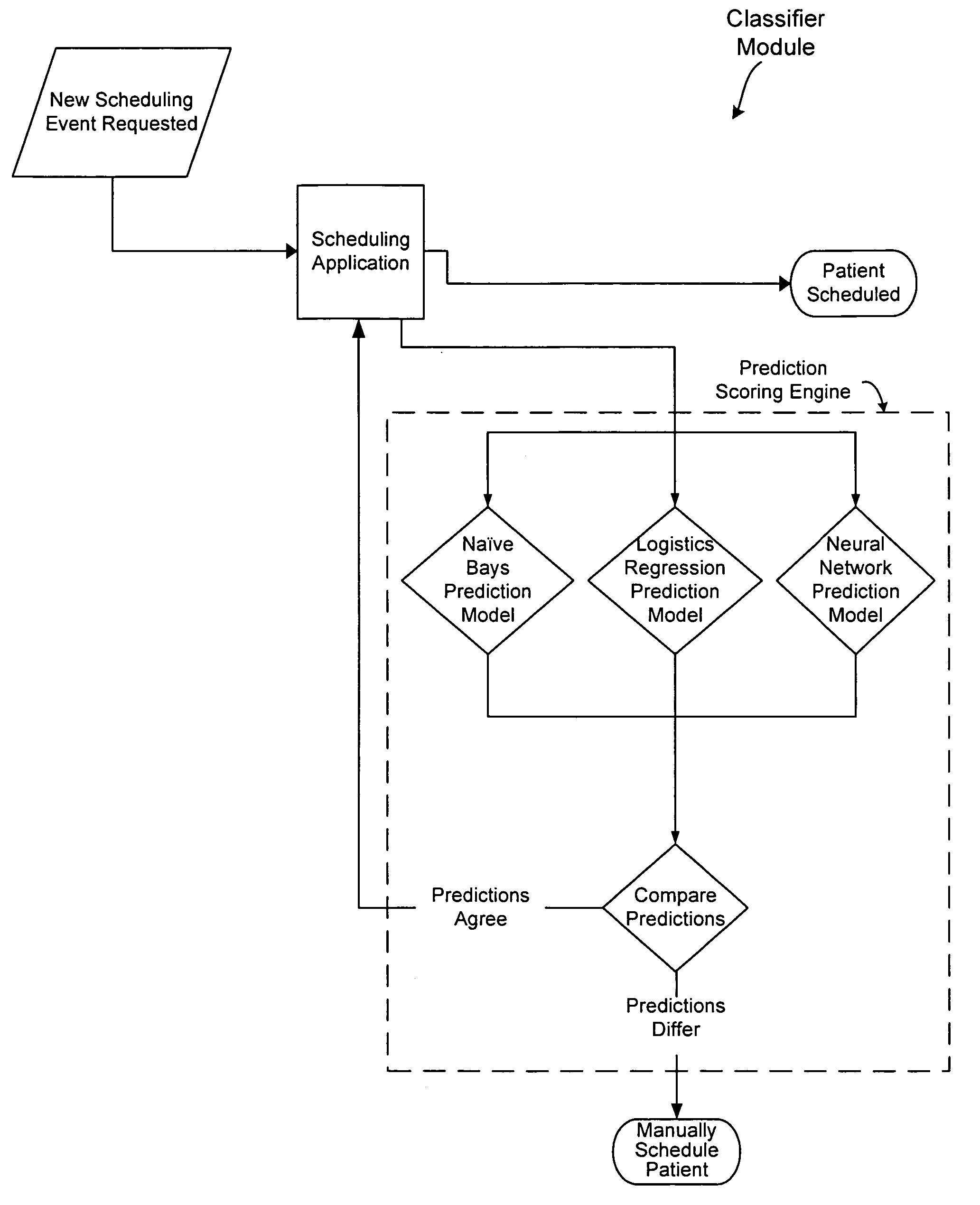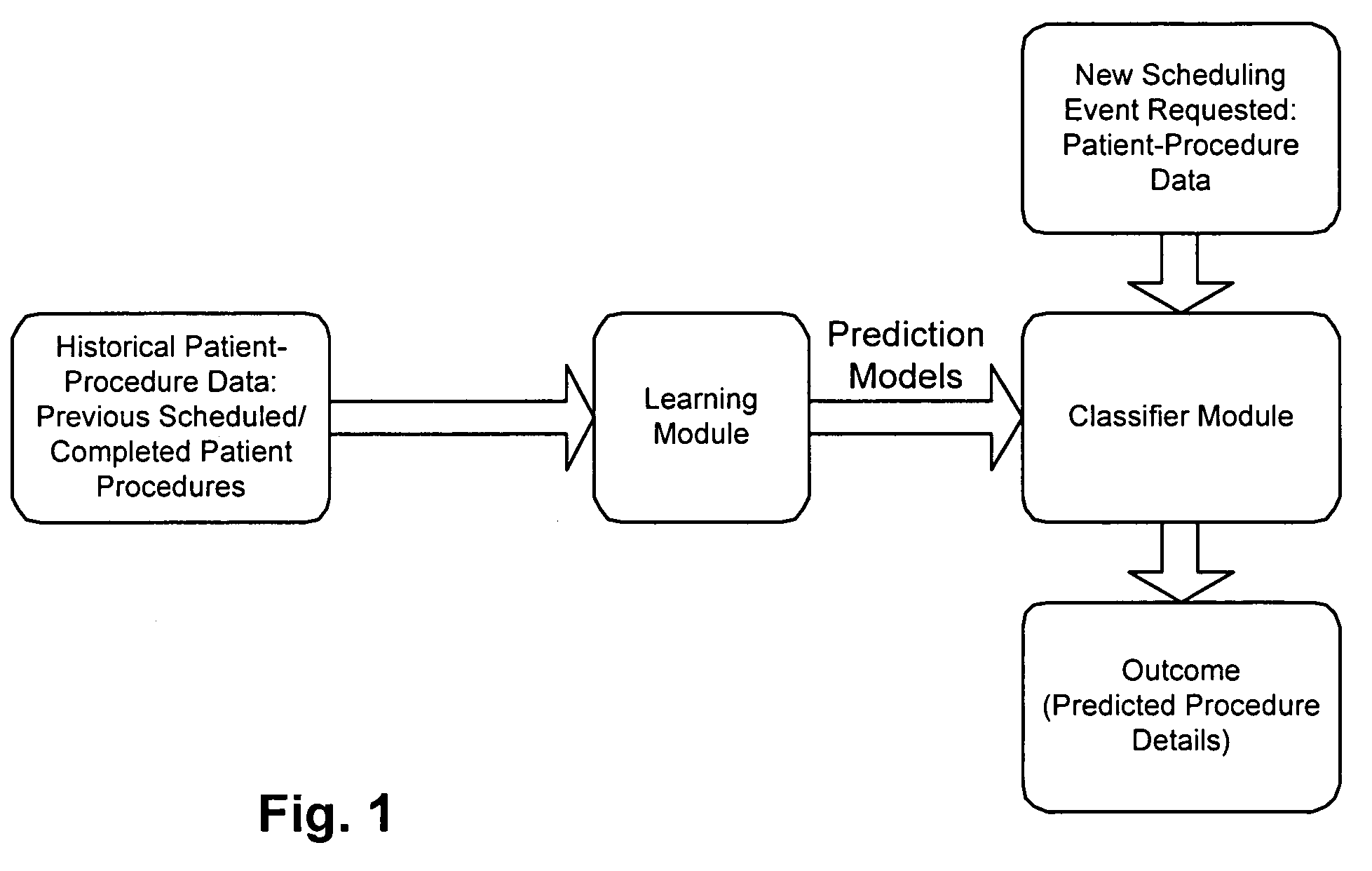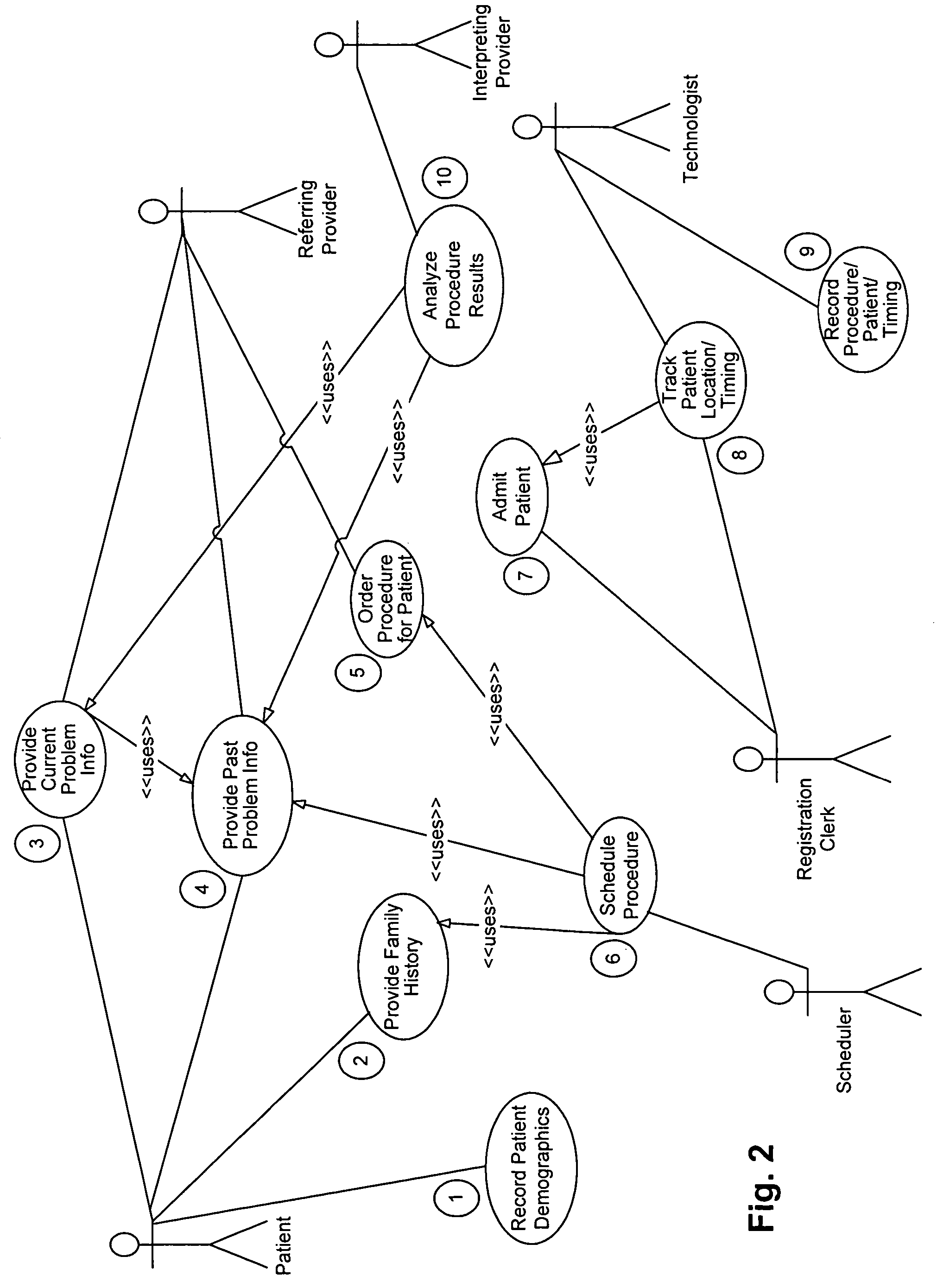Predictive scheduling for procedure medicine
a technology for scheduling and procedures, applied in the field of scheduling systems, can solve problems such as over-booking of resources, people's time, and high cost of healthcare services
- Summary
- Abstract
- Description
- Claims
- Application Information
AI Technical Summary
Benefits of technology
Problems solved by technology
Method used
Image
Examples
case 4
[0035]Use Referring provider or providers and patient provide information about the patient's past problem history and ongoing status of problem history, which may or not be related to the current problem.
[0036]Use case 5: Referring provider orders or otherwise prescribes a procedure for the patient. The procedure can be, for example, medical imaging, diagnostic testing, or laboratory work. In short, any medical procedure that requires the patient's time and / or the healthcare provider's resources can be scheduled.
[0037]Use case 6: Scheduler schedules the patient to an appropriate medical device (for carrying out the prescribed procedure) at a specific location, date, and time.
[0038]Use case 7: Patient is admitted or otherwise checks-in for the proscribed procedure.
case 8
[0039]Use Patient is tracked (physical location) within the healthcare provider's facility (e.g., hospital or clinic). Timing information is recorded.
[0040]Use case 9: Technologist performs the procedure and records the procedure duration (e.g., start and stop times), as well as general information about the patient and procedure (e.g., patient ID and body site of procedure).
case 10
[0041]Use Interpreting provider renders judgment on the results of the performed procedure.
[0042]Each of these use cases generates useful information that can be harvested and used in predictive scheduling of future patients. The data can be stored in a general database of the healthcare provider, such as a relational or object-oriented database, or other suitable storage facility.
[0043]Note the same data of use cases 1, 2, 3, 4, and 5 is also collected for new patients, who are then predictively scheduled in accordance with an embodiment of the present invention. That newly collected patient-procedure data becomes part of the historical patient-procedure data. Thus, the prediction models continue to learn as time goes on. In more detail, a new patient is processed via use cases 1 through 4, and then the referring provider orders a procedure for the patient, per use case 5. The collected data and ordered procedure can then be used as input (e.g., a new scheduling event request that...
PUM
 Login to View More
Login to View More Abstract
Description
Claims
Application Information
 Login to View More
Login to View More - R&D
- Intellectual Property
- Life Sciences
- Materials
- Tech Scout
- Unparalleled Data Quality
- Higher Quality Content
- 60% Fewer Hallucinations
Browse by: Latest US Patents, China's latest patents, Technical Efficacy Thesaurus, Application Domain, Technology Topic, Popular Technical Reports.
© 2025 PatSnap. All rights reserved.Legal|Privacy policy|Modern Slavery Act Transparency Statement|Sitemap|About US| Contact US: help@patsnap.com



